Panic at the Inferno: MYSTICS IN HELL, published by Perseid Press
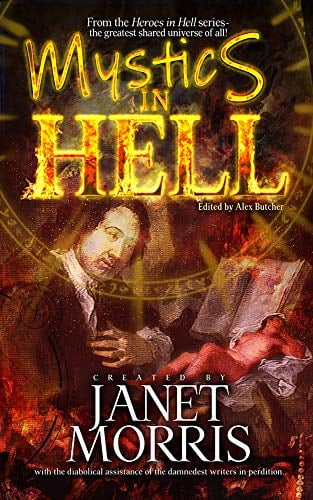
Book design, A.L. Butcher. Cover design, A.L. Butcher and Roy Mauritsen. Edited by, Janet Morris and A.L. Butcher. Cover painting: Portrait of Sir Francis Dashwood, 11th Baron le Despenser, by William Hogarth, 1764. Oil on canvas. Mystics in Hell cover image, copyright © Perseid Press, 2021
“It’s just because I have picked a little about mystics that I have no use for mystagogues. Real mystics don’t hide mysteries, they reveal them. They set a thing up in broad daylight, and when you’ve seen it it’s still a mystery. But the mystagogues hide a thing in darkness and secrecy, and when you find it, it’s a platitude.” ― G. K. Chesterton
After a few unforeseen delays, Mystics in Hell has finally arrived. This is the latest edition in the long-running, shared-universe series, Heroes in Hell™. The gathering of real people from across our historical timeline, and the casting of fictional characters born of myth and legend, folklore and literature, is what makes this such a unique and fun series. Now, for those of you unfamiliar with the series or for those readers who may wish to be brought up to date, once again I’ll do my best to recap what’s been happening in our favorite Afterlife.
Mystics in Hell follows on the hot hooves of Lovers in Hell and the two volumes preceding it. The plagues which first manifested themselves in Doctors in Hell are evolving and mutating. In Pirates in Hell, disastrous floods swept through Hell, leaving behind wrack and ruin, and new islands and coastlines. The damned sought the help of pirates and other seafarers, seeking refuge and passage, hoping to escape to dry land and whatever safe harbor they could find. But there is no such thing as a safe harbor in Hell, and there is no escape.
Now, in Mystics in Hell, although the flooding has begun to recede, there are still plenty of lost souls infected with the contagions that had not yet been eradicated. No vaccine, no inoculation had any effect on the plagues; they must simply run their course. Plague Zombies still wander aimlessly about until they eventually fall apart like sandcastles and fade away—only to pop up again in the Mortuary to suffer Hell’s version of resurrection: Reassignment. And Erra, the Babylonian plague god, and his seven Sibitti warriors, who are the sons of Heaven and Earth are still a viable and visible presence. Erra had been sent to Hell by the Almighty Above, sent to deal out punishments to the damned, because Satan has been a bit too lenient. Many displaced souls have been separated in the disasters, or shunted to a part of Hell where they know no one. The threat of the purging of groups, individuals and those harboring certain beliefs hangs over them like dark, menacing storm clouds. For instance, two souls can be walking down a street and one will dissolve into sand between two steps: that person has been purged. The damned panic and scramble about as fear of these purges drives them to seek any help they can. To mystics and prophets, sages and seers of any sort they flock, seeking answers where there are no answers, seeking guidance and a way out, but as we all know, there is no way out. . .
Mystics in Hell – Table of Contents
Janet Morris and Chris Morris set the tone and get the ball rolling with their story, “A Frame of Mind”, wherein Kit Marlowe treks back from exile, where he has encountered three witches. Carrying a skull which he found on a blasted heath, he arrives at the Globe, where Satan and the angel of death accost him. At their displeasure, he’s banished once more, this time to return instantly via the powers of the Fates. Satan meets him at a cast party and decrees that Kit not only will spy for him, but play Banquo, beheaded in each subsequent performance of Macbeth.
“The Come Right Inn,” by Andrew P. Weston, is where we meet up with one of Satan’s most secretive agents. A charming woman with a finger—and most other body parts—in every pie. She’s bewitching, beguiling, and bedeviled to be sure, but won’t think twice about skinning you alive if you cross her.
In A.L. Butcher’s “Abode of Woe” . . . When the self-proclaimed anti-messiah builds a temple on their doorstep and ruins business, Calchas and Cassandra look to some devious means to bring down the walls. Dueling mystics and misinformation bring mayhem to the underworld.
“Fool’s Gold” is S.E. Lindberg’s tale of the Egyptian god of mysticism, Thoth, who seeks conspirators to retrieve the Philosopher’s Stone; with it, Thoth could usurp Satan’s control of the realm of Duat. Taking up the charge is Howard Carter, infamous antiquarian and tomb raider, and the disgraced evolutionist Ernst Haeckel. They discover that King Midas’s alchemical ability to transmute flesh into gold relies on the stolen stone, and Midas is producing Hell’s new gastro-currency: buttcoin. They infiltrate the Mortuary Mint and sabotage the currency’s production. Instead of returning the stone to Thoth, the duo uses it to build up their own fortune. The auditors of Hell, namely the First and Second of the Sibitti, police the matter.
As Lou Antonelli tells us in his “The True Believer” . . . few national leaders of the 20th century had as much of a negative and controversial impact on history as Hendrik Frensch Verwoerd, prime minister of South Africa from 1958 to 1966, when he was assassinated. Commonly referred to in South Africa as “Dr.” Verwoerd, he had a PhD in psychology, and went down in history as The Man Who Invented Apartheid. Now in Hell, Dr. Verwoerd refuses to acknowledge his infernal fate and gets a special visit to set him straight.
In Gustavo Bondoni’s “By Any Means Necessary,” Umberto Eco knows he’s in Hell; the suffering and multiple deaths that never kill him permanently are more than enough of a clue for a man of his learning. But when he gets forcibly recruited by Nazi Commando Otto Skorzeny to prove the theories of one of history’s greatest charlatans, he thinks things can’t get any worse. He’s wrong. Hell can always get worse.
“Excalibur,” by Tom Barczak, deals with the harsh reality of the Afterlife: Hell can be hard. But Rasputin has something even harder, and Lafayette Ronald Hubbard desperately needs it if he is going to pull off the greatest magic trick Hell has ever known.
“On The Run,” by Michael H. Hanson, tells of Sufi mystic Rumi, Zen Buddhist Dōgen, and Charlatan Spiritualist Mina Crandon using their new-found magics on the grandest of all quests, to find powerful talismans that will allow them to escape Hell itself.
In Andrew P. Weston’s “The Sorcerous Apprentice,” Daemon Grim learns new tricks from an old dog. And just as well. There’s a fallen saint to bring to heel, and she’s not known for playing ball . . . crystal or otherwise.
As for my own story, “The Colossus of Hell” . . . Doctor Victor Frankenstein and computer scientist Alan Turing want to build a cyborg. Quasimodo wants to win the hand of the French fortune teller, Marie Anne Lenormand. Rasputin and Cagliostro want to open an exclusive, private club. And a mysterious damned soul, known only as the Orange Ogre, wants revenge against anyone in Hell who ever cheated or betrayed him, laughed at and humiliated him, or even ignored him—especially His Satanic Majesty himself.
Janet Morris and Chris Morris follow up on their “A Frame of Mind”, and bring the curtain down with their tale, “Strange Arts.” In a Tower cell, Marlowe’s head struggles to regain consciousness and rejoin his body. Here he finds his Elizabethan spymaster, Walsingham, waiting with J the Merciful and three mysterious Sisters. After painfully stitching together his body and soul, the five entreat him to join their most secret conspiracy.
Long Live Heroes in Hell
Going strong for 35 years, Heroes in Hell, created and edited by Janet Morris, is a series of shared world fantasy books, within the genre called Bangsian fantasy. The first 12 books in the series were published by Baen Books between 1986 and 1989. The series was resurrected in 2011 by Janet Morris with the thirteenth book and eighth anthology in the series, Lawyers in Hell, followed by seven more anthologies and four novels between 2012 and 2021.
Mystics in Hell is available from Amazon in both Paperback and Kindle editions. You can also find it on Barnes-Noble, Apple Books, and other online retailers.
I hope you’ve enjoyed my article and have had your interest piqued enough to go and check out the latest volume in this Eternally Infernal series. Thank you!
Joe Bonadonna
Joe Bonadonna is the author of the heroic fantasies Mad Shadows: The Weird Tales of Dorgo the Dowser (winner of the 2017 Golden Book Readers’ Choice Award for Fantasy); Mad Shadows II: Dorgo the Dowser and the Order of the Serpent; Mad Shadows III: Heroes of Echo Gate; the space opera Three Against The Stars; the Sword-and-Planet space adventure, The MechMen of Canis-9; and the Sword & Sorcery adventure, Waters of Darkness, in collaboration with David C. Smith. With co-writer Erika M Szabo, he wrote Three Ghosts in a Black Pumpkin (winner of the 2017 Golden Books Judge’s Choice Award for Children’s Fantasy), and The Power of the Sapphire Wand. He also has stories appearing in: Scott Oden Presents: The Lost Empire of Sol, Azieran—Artifacts and Relics, GRIOTS 2: Sisters of the Spear, Heroika: Dragon Eaters, Poets in Hell, Doctors in Hell,Pirates in Hell, Lovers in Hell, and Mystics in Hell; Sinbad: The New Voyages, Volume 4; and most recently, in collaboration with author Shebat Legion, he wrote Samuel Meant Well and the Little Black Cloud of the Apocalypse. In addition to his fiction, he has written a number of articles and book reviews for Black Gate online magazine.
Visit his Amazon Author or his Facebook Author’s page: Bonadonna’s Bookshelf
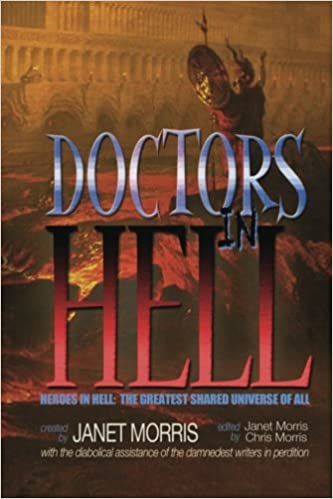
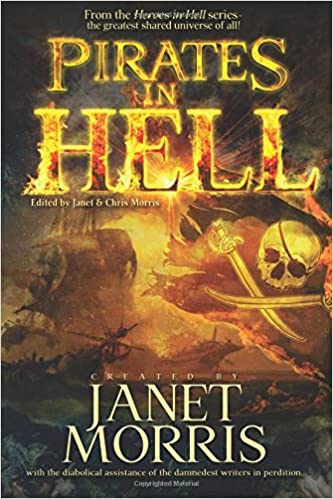
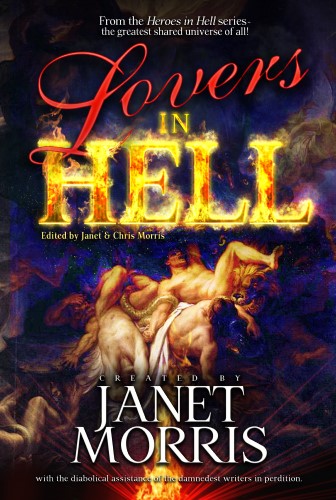
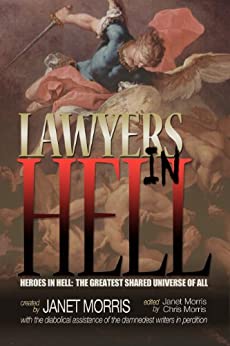
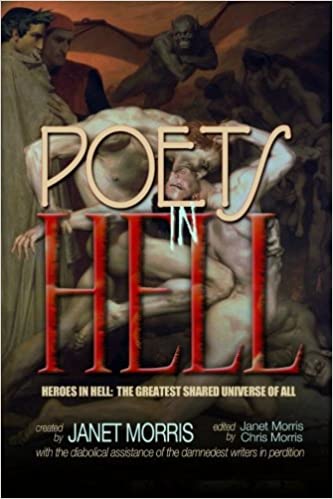
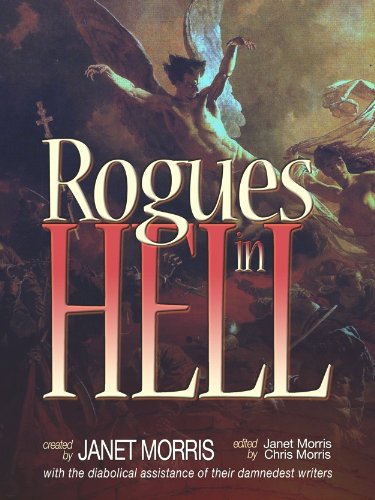
Thank you, Seth for a great-looking layout. Thank you, John, for allowing me to show off again, lol!
You rock Joe. It’s great to make hell as accessible as possible, and this article is inviting!
Thanks, Seth! Rock on, and stay close to the fire.
Fascinating stuff. I have to give it a try. Better start with the first book in the series or the latest volume works also as a stand alone book?
You can jump in with any volume. Most readers select a book/theme that resonates with them. Each theme emphasizes historical events/characters. As per the summaries above, Mystics is full of religious zealots and devotion to deities.
That said, many are returning authors who write episodes from book to book starring the same characters. So if you enjoy a particular author (are their associated characters), you can follow those adventures
There are formally >20 books in the Heroes in Hell series, starting in 1986 and stalling in 1989 to be picked up again by author and champion Janet Morris. In 2011 she jumpstarted the series again with Lawyers in Hell. So that would serve as a natural starting point as well.
Excellent reply, Seth!
Thanks, Mario. They can be read in any order, although for a better understanding of what’s going on in Hell, the 21st Century editions, in order, are: Lawyers in Hell, Rogues in Hell, Dreamers in Hell, Poets in Hell, Doctors in Hell, Pirates in Hell, Lovers in Hell, and now Mystics in Hell. You can Google Heroes in Hell and check out the Wikipedia page, which lists every book in order, (as well as the authors and the title of their stories) starting back in 1986 to 1989. Those are the Baen Books editions. You can get them Used from Amazon, if interested.
Thank you for the explanation!
You’re very welcome! And thank you for your interest in the series.
Thanks to all who contributed to this volume of the Heroes in Hell series. We’re keeping a warm spot by the fire for you all.
Janet, you’re very welcome. And thank you, too. I’ll bring cookies.